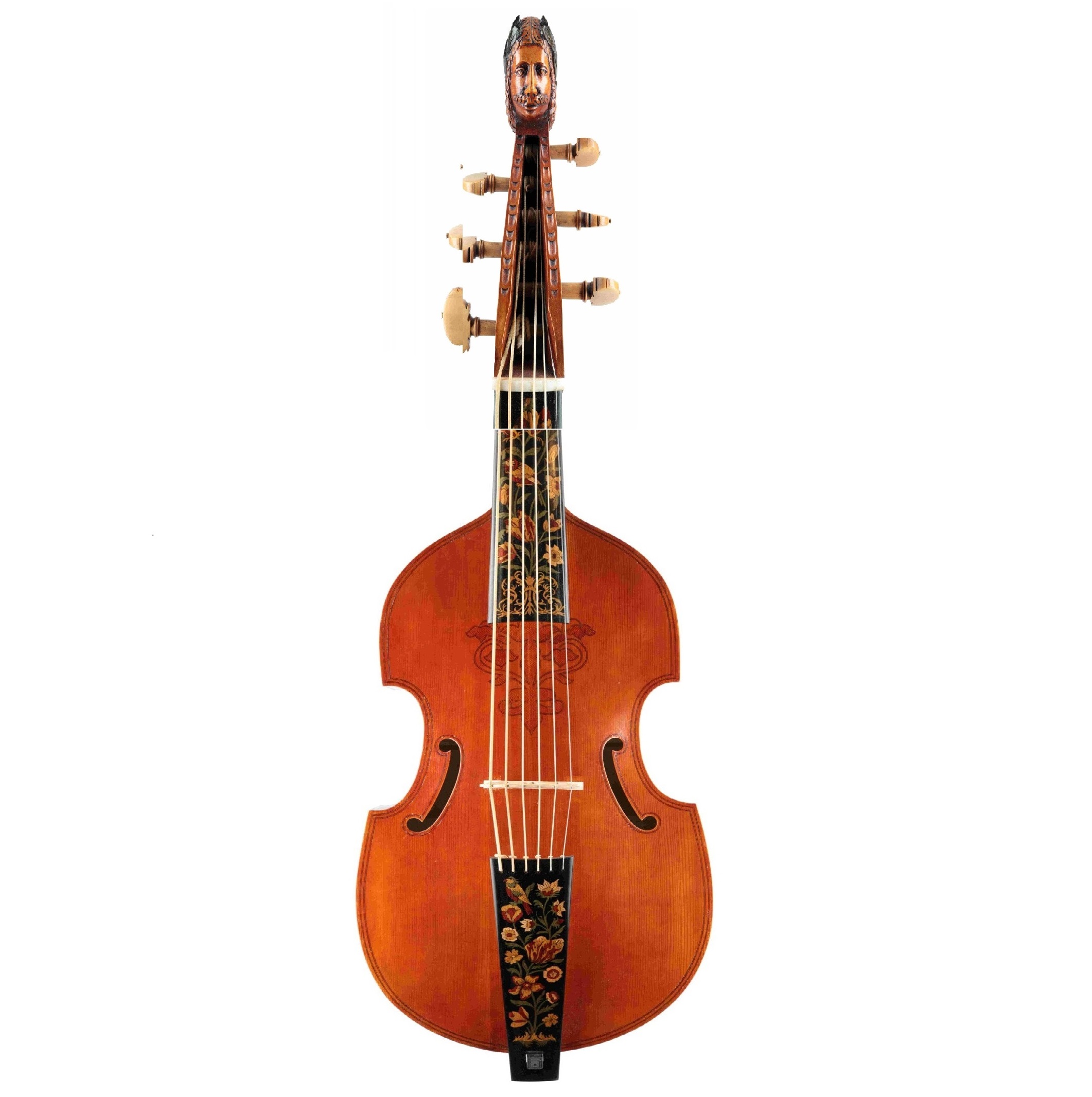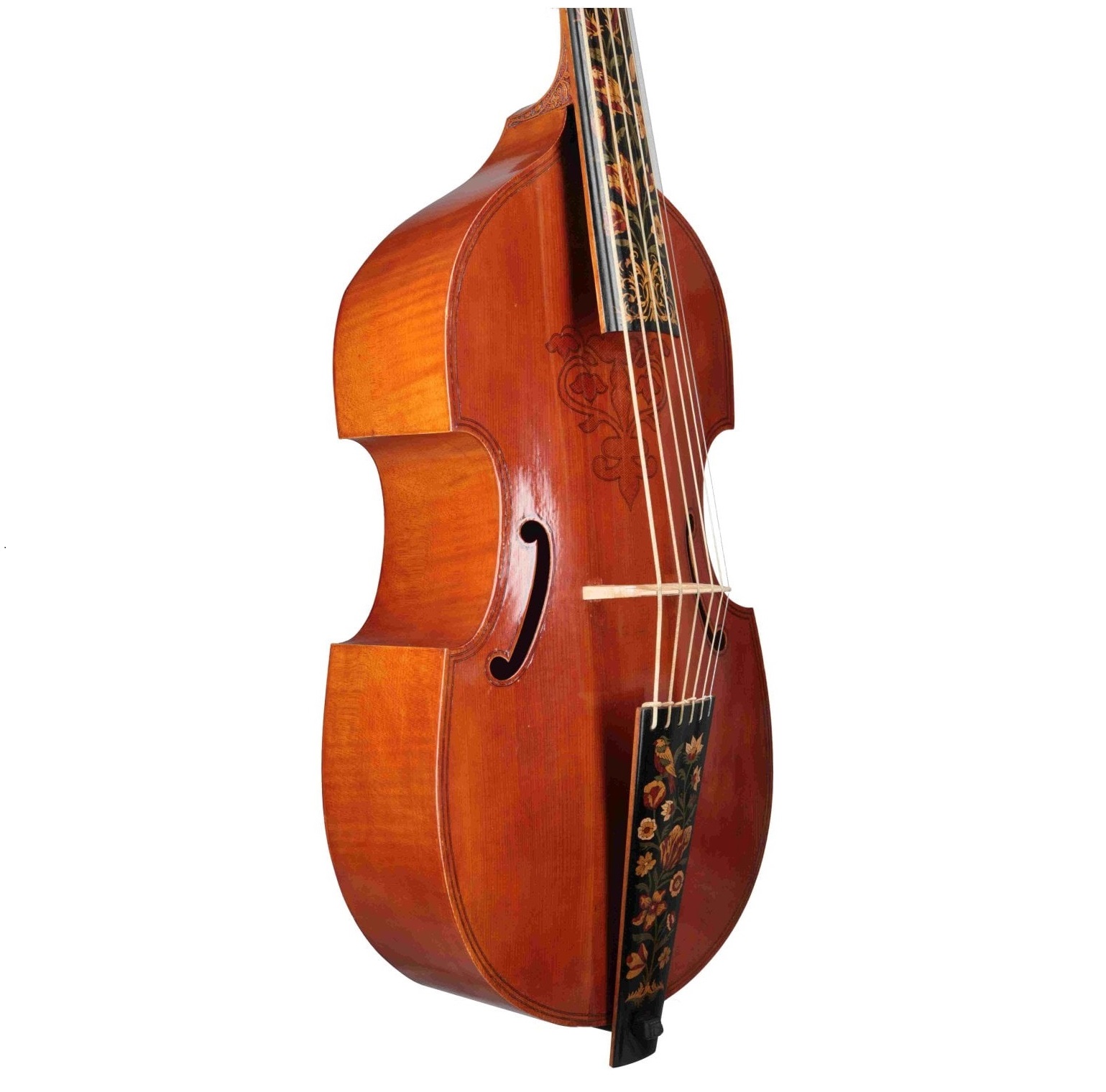Division viol
Bowed Instruments
Europe
Between 1001 and 1900 AD
Video
The division viol is a historical bowed string instrument that played a crucial role in the music of the 16th and 17th centuries. It is a type of viola da gamba, primarily used in England for virtuosic solo playing and the improvisation of divisions—ornamented variations on a melody or ground bass. The instrument was popular among amateur and professional musicians alike and was a cornerstone of English consort and solo music.
Historical Background
The division viol emerged during the late Renaissance and early Baroque periods, flourishing in England during the 17th century. The instrument was favored by musicians seeking greater expressive capabilities and virtuosic possibilities compared to the standard bass viol. The division viol was closely associated with Christopher Simpson, whose treatise The Division-Violist (1667) remains a fundamental source on playing techniques and musical style of the time.
Evolution and Development
The division viol evolved from the viola da gamba family, which itself originated in Spain and Italy during the late 15th century. Unlike other gambas, the division viol was specifically designed for improvising divisions—rapid and elaborate variations upon a bassline. The instrument’s increased playability and refined construction allowed for faster note articulation and expressive ornamentation.
Construction and Design
The division viol shares many characteristics with the standard bass viol but features certain modifications that make it more suitable for intricate passagework and embellishments.
Physical Characteristics
Size and Shape: Slightly smaller than a typical bass viol, allowing for increased agility.
Strings: Usually six strings tuned in fourths with a major third in the middle (like the standard bass viol).
Frets: Movable gut frets, similar to those on a lute, enabling microtonal adjustments and expressive intonation.
Bow: The bow was typically held underhand, offering dynamic control and varied articulation.
Soundboard: Made from spruce with f-holes, contributing to a warm, resonant tone.
Fingerboard and Tailpiece: Crafted from hardwoods such as ebony or rosewood, providing durability and aesthetic appeal.
Tuning and Range
The tuning of the division viol is generally in D-G-C-E-A-D, similar to the bass viol but optimized for greater maneuverability. This tuning facilitates playing in different positions and executing rapid divisions with ease.
Playing Techniques
The division viol required a high degree of technical proficiency. Players were expected to execute rapid divisions, ornamentations, and expressive phrasing while maintaining the integrity of the underlying bassline.
Bowing Techniques
Underhand grip: Allowed for subtle dynamic changes and expressive phrasing.
Bow speed and pressure control: Enabled a wide range of articulations from smooth legato to sharp détaché strokes.
Use of bowing patterns: Often alternated between slurred and separate strokes to accommodate fast passagework.
Fingering and Positioning
Frets provided consistent intonation but also allowed players to execute microtonal inflections.
Shifting positions: Advanced players moved fluently between positions to accommodate rapid melodic divisions.
Ornamentation: Frequent use of trills, mordents, and slides added expressive depth to performances.
Repertoire and Music
The division viol was integral to the development of English consort music, solo divisions, and accompanied monody.
Key Composers and Works
Christopher Simpson (1602–1669): The Division-Violist (1667), an essential manual covering techniques and compositions.
John Jenkins (1592–1678): Wrote consort music featuring elaborate viol parts.
William Lawes (1602–1645): Composed pieces highlighting the expressive capabilities of the division viol.
Tobias Hume (c.1579–1645): Early solo works emphasizing idiomatic viol techniques.
Division Playing
Division playing involved improvising variations over a repeating bassline. This technique was highly valued and required both technical proficiency and creative spontaneity. A performer would:
Establish a simple bass melody.
Gradually increase complexity through scale runs, arpeggios, and rhythmic variations.
Utilize ornamentation to create engaging, virtuosic performances.
Consort Music
Although the division viol was mainly a solo instrument, it also played a role in consort settings, where it provided both harmonic and melodic elements. In ensembles, the division viol often took on the role of a lead melodic instrument, elaborating upon basslines or participating in counterpoint.
Significance and Legacy
The division viol was not only a vital instrument in English Baroque music but also influenced the development of viola da gamba technique and later stringed instruments.
Influence on Modern Instruments
The cello inherited some of the virtuosic and expressive techniques developed for the division viol.
The practice of ornamented variation playing influenced later instrumental styles, including violin and harpsichord performance.
Revival in Early Music Movement
With the rise of historically informed performance practice, the division viol has regained popularity. Modern luthiers continue to craft replicas, and performers study historical sources to recreate authentic playing techniques.
The division viol stands as a testament to the ingenuity and artistry of Baroque musicians, embodying a unique blend of technical prowess, improvisational creativity, and expressive depth. As interest in early music grows, this fascinating instrument continues to captivate modern audiences, preserving its rich historical legacy.
FAQ
What are the key features of the Division Viol?
The Division Viol is a six-stringed bass viol, typically tuned in fourths with a major third in the middle. It features gut strings and a fretted fingerboard, allowing for precise intonation. The bow is held underhand, offering expressive articulation. Its construction emphasizes resonance, making it ideal for solo and ensemble playing.
What type of music is played on the Division Viol?
The Division Viol was primarily used for improvisational variations called divisions, where a melody is ornamented over a repeating bass line. It was also used in consort music and continuo playing. It gained popularity in the late 16th and 17th centuries, particularly in England. Notable composers include Christopher Simpson and John Jenkins.
What does the Division Viol sound like?
The Division Viol produces a warm, resonant tone with a rich, expressive quality. Its gut strings create a mellow sound, and the underhand bowing technique allows for nuanced phrasing. The instrument's dynamic range makes it ideal for both intricate solos and blending in consort settings. It is known for its ability to sustain lyrical and virtuosic passages.
 Links
Links
References
Other Instrument
Categories



















